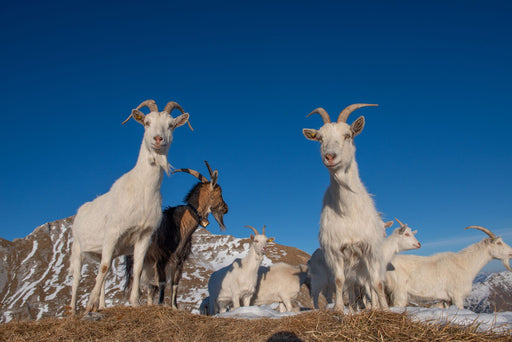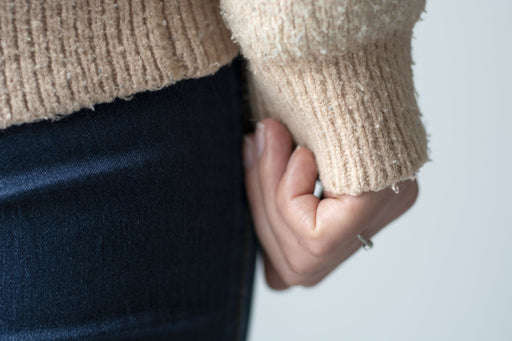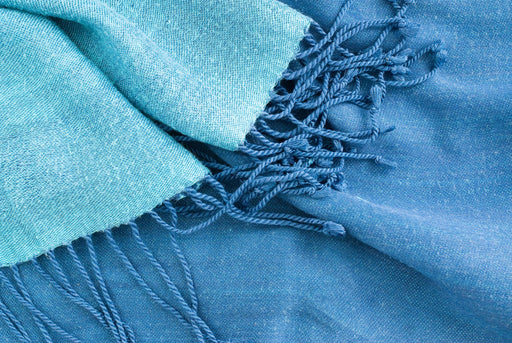How to Identify High Quality Cashmere

Do you know how to tell if the cashmere you are wearing is 100-percent real from touch alone? No one wants to make the realisation that they purchased poor quality cashmere or, worse, a phoney material. From understanding that the pricing may be too good to be true to other tells of quality, we have everything you need to arm yourself and shop wisely.
Here’s everything you need to know to identify quality cashmere, including tests you can do in-store to make sure it’s legitimate.
What is Cashmere Wool?
One of the most precious and luxurious natural products around, cashmere is coveted by many for its softness and insulating properties. High-end fashion garments and other items of superior quality are often crafted from cashmere wool.
Cashmere is renewable, sustainable, and it provides warmth without adding immense bulk. The best part? Unlike other forms of wool, cashmere does not have an itchy feeling.
Where Does Cashmere Come From?
Cashmere comes from Kashmir goats, which dwell in the northern hemisphere, with the biggest herds located in China, Iran, Mongolia, and Afghanistan. The goats grow an extra layer of fleece for warmth between the 21st of June to mid-December. The colder the weather the goats experience, the longer their fur grows. On the outside is a guard layer that is wiry and waterproof, while the undercoat is ultra-fine.
From that undercoat, we get cashmere.
However, depending on where the goats are located, the texture and softness of their fur may widely vary. The best cashmere fibre is harvested from Chinese or Mongolian Kashmir goats.

Cashmere Quality Grades
So, you want to know how to identify quality cashmere. There are a couple of cashmere characteristics that factor into quality. There are three cashmere quality grades—A through to C.
Let’s discuss this a bit further.
Grade C Cashmere
The lowest quality of cashmere is “C.” The qualities of Grade C include fibres that are thicker than average, with a diameter of about 30 microns. Grade C cashmere is the cheapest.
Grade B Cashmere
The fibres of the second tier of cashmere are a bit thinner, averaging around 19 microns.
Grade A Cashmere
The most expensive of all cashmere, because it is the thinnest, longest, and most durable. The diameter of Grade A cashmere is 14 microns, and the length is around 36 mm. You might get some sticker shock looking at the price and wonder why it is so pricey.
The reason is this: the strength of the fibre despite the thinness. You get more durability in the garment, prolonging its lifespan. Furthermore, if the Grade A cashmere is also “white for white” cashmere from China, you can expect the cost to be exorbitant.
There are also differences in how the fibres wear. Higher quality cashmere pills less than lower grades; and items made from Grade A cashmere retain their shape much better. Plus, finer cashmere is infinitely softer.
Now you know why a cashmere scarf could be either $12 or $5,000 at the boutique. More often than not, the item is genuinely cashmere wool, but it is not the finest grade.
Ways to Tell if The Cashmere Quality is Good
Ready to learn the ways of determining cashmere quality? There are a couple of tests you can do quickly and easily.

The Look Test: What does Your Cashmere Item Look Like
At the store, you have the benefit of those bright lights overhead. Use them to your advantage. Pick up the cashmere item, holding it at eye level, and stare across the fabric’s surface. You should see about 1-2 mm of fluff or fibres. Longer fibres mean less pilling. If there is more fluff than 2 mm worth, then you should be suspicious. Usually, that reveals that the manufacturer added in shorter fibres to try and enhance the softness of the garment. But those short hairs will wear out rapidly.
The Pilling Test: Does Your Cashmere Item Pill
Here is a question for you: Why does cashmere pill? And, does all cashmere pill?
Also known as bobbing, a fabric will pill when it has rubbed against itself. Pilling usually forms on the arms, elbows, sleeves, and stomach of a sweat or other clothing pieces. The shorter the fibres of a fabric, the more easily they get twisted up and knotted. Cashmere fabrics do pill, but it depends on the quality of the cashmere. A finer, tighter cashmere wool will pill less than the lower grades. So, using that premise, we have the pilling test. All you need to do is run your hand over the cashmere. You may notice right away that little wads of fibres are forming. That means there are shorter fibres within the fabric, which is indicative of a lower quality. All cashmere pills when met with friction over time, but only the lowest quality will pill rapidly.

The Touch Test: Does the Cashmere Feel Real
Cashmere should never feel scratchy or unpleasant to the touch. If it does, then you are either touching low grade cashmere or a cashmere blend. The better the cashmere, the more soft it will be. Be warned, however. Some companies will treat the cashmere fibres with a softener or chemical to make it feel softer. If the cashmere is suspiciously too soft, be careful. That means the cashmere has reduced durability.
The Stretch Test: Is Your Cashmere Stretching
Does cashmere stretch? Why yes, it does. And that stretchy quality is going to help you figure out the quality of the fabric.
Gently stretch the garment or item out then let go and watch if the item springs back into the original shape. High quality cashmere will return to normal; lower grades either stay stretched out or take far longer to revert to normal.
Another way to use the stretch test is to try looking through the item. For instance, if you hold up a lower grade cashmere jumper, it will look thin and more susceptible to holes than a sweat of superior quality.
100% Cashmere Fabric vs. Cashmere Blend
There is no doubt that 100 percent cashmere yarn is superb. Wearing a 100 percent cashmere keeps you warm and cosy in the winter and cool during spring and autumn. Moreover, high quality cashmere will get more soft with age without the pilling.
But what about a cashmere blend? Does it wear the same way? Not necessarily. When cashmere is combined with other kinds of wool or a synthetic fibre, the price is not the only thing impacted. You can expect the quality of the blended fibres to diminish the quality of cashmere.
Therefore, if you plan on buying cashmere, aim for a purer grade. Read the label of the item. Based on laws by the Federal Trade Commission or similar government bodies, cashmere must be labelled as either 100% cashmere or as the blend, such as 60% Merino wool and 40% cashmere.

What Does “Ply” Mean?
The label can tell you a lot about the cashmere used. Look at the ply, which is the number of threads twined together to make a single piece of cashmere yarn. When two threads of cashmere are twisted into one piece, that is called 2 ply cashmere. Three threads equal 3 ply cashmere and so on. By twining the threads of cashmere together, you get the benefit of increased strength and durability.
You want to purchase items that are 2 ply cashmere or higher. 1 ply cashmere is not as durable and has a risk of getting holes. Keep in mind that plies greater than 3 ply will add much more insulation to an item, but that does not do anything for the quality.
What Does “Gauge” Mean?
Next, we have gauge, the partner of ply. The gauge is the measure of how tightly the threads have been knit together. In other words, it is the number of rows and stitches every inch. The greater the gauge, the more cashmere yarn was incorporated into the item. Also, the knit will be much tighter.
This means that a 12-gauge jumper is going to have 12 rows or stitches per 1 inch of cashmere. The fabric will feel dense to the touch. Compare that to 7-gauge cashmere, a more lightweight option that may even look a little like mesh.
Wrapping Up: Identifying Quality Cashmere
Using the tips in this article, as well as the information, you should now be able to sniff out the best quality cashmere in the store! Make sure you are purchasing the quality that fits your budget, especially if you want only the softest, warmest cashmere out there. Along with the appropriate care methods, high quality cashmere will last you forever!

About MothPrevention
MothPrevention® speak to customers every day about their clothes moth issues - clothes moths are a species that are ever increasing and that can cause significant damage to clothes, carpets and other home textiles.
To date, we’ve helped over 250,000 customers deal with their moth problems. We have developed professional grade solutions including proprietary pheromones and trap design engineered to the highest production standards.





